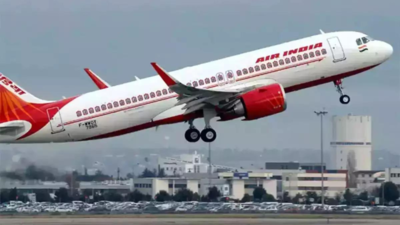
NEW DELHI: Air India will nearly double the premium cabins on its legacy wide body aircraft that are being sent for retrofitting, starting this year, and is also developing an all-new first class for the Maharaja’s flagship Airbus A350 that will be rolled out in the next 2-3 years. Given the post Covid trend of premiumisation, the airline has seen its front-end revenue grow by 2.3 times after being taken over by the Tatas in Jan 2022 – compared to 1.6 times in economy, according to AI chief commercial officer (CCO) Nipun Aggarwal.
Instrumental in AI’s record firm order for 570 aircraft placed since Feb 2023, Aggarwal said: “Pre-AI takeover, Tata Group’s presence in aviation was sub-optimal. The market share of our JVs, erstwhile Vistara and AirAsia India, was in low single digits with a combined fleet of 70 aircraft. AI was once in a lifetime opportunity for us to scale up the business and become viable.”
“We have added 92 aircraft since the takeover and many grounded (planes of AI) are flying again. Vistara reached a fleet of 70 aircraft in under a decade. The combined fleet of full service AI (Vistara merged into it) and budget AI Express (AirAsia India merged into it) is now at 300. Revenue has grown over 10 times from $1 million in FY20; routes and flights have already more than doubled. There is a meaningful and material aircraft order for the group now,” he added.
With India being the fastest growing aviation market globally and foreign airlines accounting for almost 80% of the long-haul traffic via their hubs abroad, AI is working to strengthen its hubs in Delhi, Mumbai and Bengaluru with AI Express working in tandem to provide the feed for wide bodies going to distant corners of the globe. By the end of next calendar year, AI and AI Express will have about 120 narrow-body planes each and the three hubs acting as the hub-and-spokes for transfer traffic.
“A huge traffic overflies India between the west and the east & Australia via the hubs near us. Through connecting flight timings, we will increase our share in all these areas including international-to-international transfers which will be doubled in three years,” Aggarwal said.
While the entire narrow body fleet will be retrofitted this calendar year, the wide body programme will begin this year with the legacy Boeing 787s and in 2026 the B777s will see their much-awaited cabin upgrade.
On the falling rupee, Aggarwal said: “That puts pressure on our profitability and cost structure with most expenses being incurred in dollar. AI has some hedge as we fly international more than others. We charge in forex and are able to pass on the impact for about half the ticket sales that happens abroad.”
Will the falling rupee mean higher fares? “Demand is price sensitive. Raising fares impacts traffic and so we have to strike a balance. If airlines had that kind of pricing power, the industry profitability would not be like it is.”










































